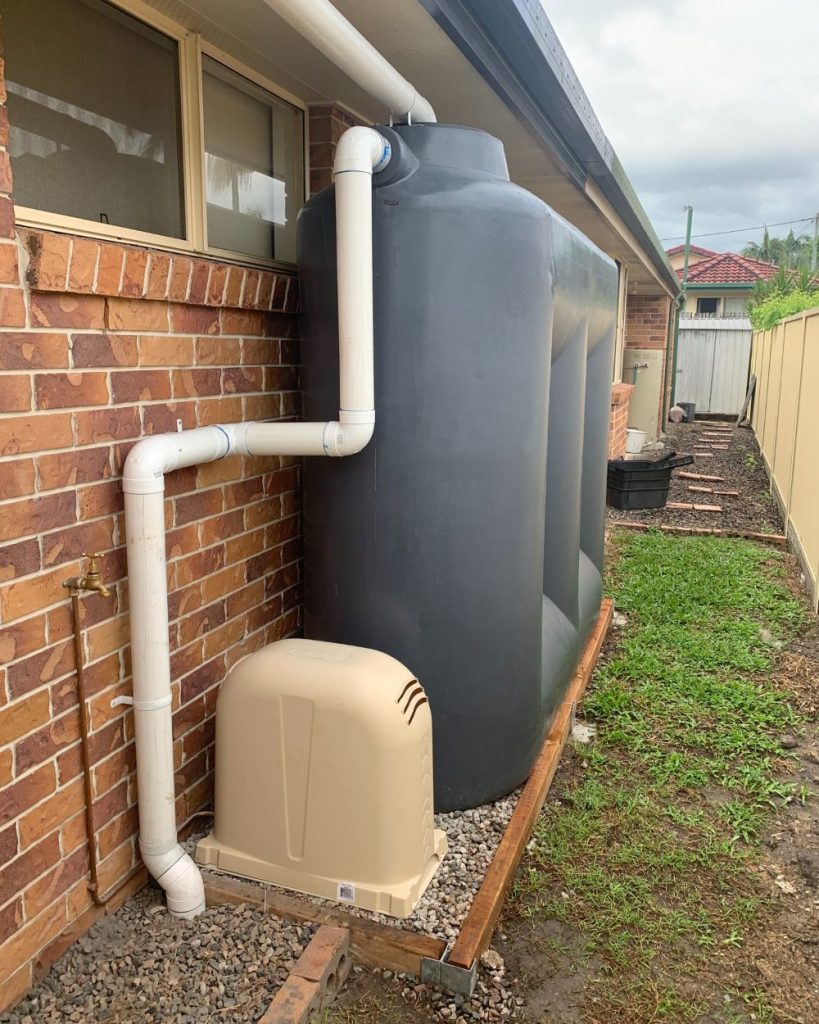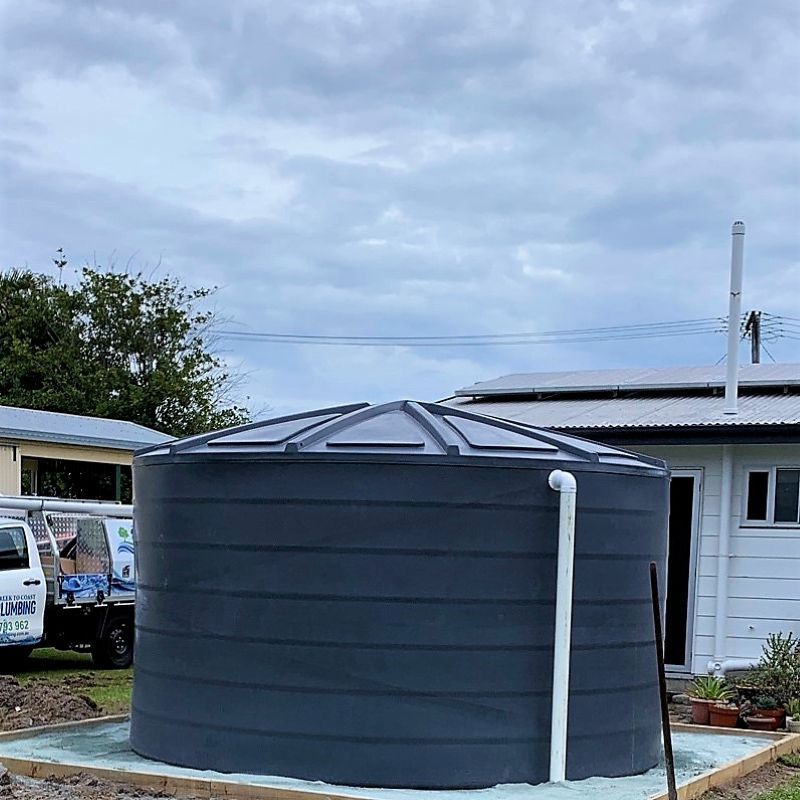Choosing the Perfect Rainwater Harvesting System to Meet Your Lifestyle and Water Conservation Goals
In Queensland, a growing number of homeowners are embracing rainwater tanks as a practical solution to lower utility bills, ease the burden on local water supplies, and create drought-resilient landscapes. Before investing in a rainwater tank, it's crucial to address a fundamental question: How much water do you realistically require for your needs?
At Creek to Coast Plumbing, we specialise in guiding homeowners in the creation of efficient rainwater harvesting systems, with determining the appropriate tank size being an essential first step in this journey.

Enhance Your Rainwater Collection Efficiency for a Sustainable Future
Assessing your rainwater collection potential is the foundational step towards effective water management. This potential is influenced by two key factors: your roof area and the average annual rainfall in your region. Understanding these elements is crucial for strategically planning a rainwater harvesting system that meets your unique requirements.
Consider the following specific details:
- Typically, for each square metre of roof area, approximately 1 litre of water can be collected for every 1mm of rainfall.
- If your roof measures 200m² and your area receives 1,200mm of rain each year, you could potentially harvest 240,000 litres annually.
However, it is important to recognise that this represents an ideal scenario. In reality, various factors such as first flush systems, evaporation, roof slope, gutter configuration, and overflow mechanisms will contribute to water loss.
We generally advise planning for a collection efficiency of 80–90% to effectively accommodate these variables and optimise your system’s performance.
What Are Your Intended Uses for the Collected Rainwater?
At this point, practical considerations become paramount. Are you collecting rainwater solely for garden irrigation, or do you have plans to use it for toilets, laundry, or even for all your household needs?
Here are some essential factors to reflect upon:
Determining the Optimal Tank Size for Your Garden Irrigation Needs
If your primary intention is to irrigate lawns, vegetable gardens, or ornamental plants, a small to mid-sized tank (2,000–5,000 litres) should be adequate.
However, this largely depends on the size of your garden and the local rainfall patterns.
In regions where brief, intense rain showers are prevalent, larger tanks may be required to capture as much rainwater as possible during these downpours, ensuring your garden remains lush and vibrant.
Utilising Rainwater for Laundry and Toilet Applications in Your Household
Households that incorporate rainwater for toilet flushing and washing machines often discover that 5,000–10,000 litre tanks provide significant advantages. These appliances typically account for around 35–40% of indoor water consumption, leading to notable cost savings over time and reducing reliance on mains water supply.
It is crucial to include a reliable pump and appropriate plumbing to connect these systems to your home, a service expertly handled by Creek to Coast as part of our comprehensive installation process.

Key Considerations for Supplying Rainwater to Your Entire Household
If your goal is to achieve complete self-sufficiency or to supply rainwater to every tap within your home, you will likely need 20,000 litres or more, depending on the size of your household. Larger tanks can also serve as a reliable backup water supply during fire emergencies, extended dry spells, or when hosting gatherings with guests.
How Many Residents Are There in Your Household?
A practical guideline suggests allocating approximately 150–250 litres per person per day when using rainwater for general household activities, ensuring that everyone’s needs are adequately met.
- For a couple: a 5,000–10,000 litre tank is usually sufficient.
- For families of four or more: consider 10,000–20,000 litres or larger to guarantee a sufficient water supply for all household needs.
The number of residents in your home will directly impact how quickly your tank depletes, particularly during dry spells when water conservation becomes increasingly important.
Is Your Roof Area Adequate for Effective Rainwater Harvesting?
The size of your roof plays a vital role in determining the amount of rainwater you can efficiently collect.
A larger roof area enhances your ability to harvest water effectively.
Moreover, the configuration of your roof is also significant. If your home has multiple roof sections that can direct water into a single tank, we can design an efficient downpipe system to optimise water capture from all available surfaces.
For smaller homes or townhouses, slimline or under-deck tanks may present the most suitable solution, and Creek to Coast can assist in identifying the optimal option tailored to your specific requirements.

Essential Elements: Placement, Guttering, and Overflow Management for Rainwater Systems
Successful rainwater harvesting involves much more than just the tank itself; it requires a well-thought-out system.
An effective rainwater system necessitates:
- Robust, well-maintained gutters to prevent blockages and facilitate smooth water flow
- Leaf guards and first flush diverters to maintain water quality and ensure the collected water is safe for use
- Overflow systems that safely redirect excess water away from your home’s foundations to prevent damage
- A solid, level tank pad or base to provide sturdy support for the structure
Creek to Coast Plumbing offers comprehensive rainwater system installations, which include gutter enhancements, pump connections, stormwater management, and filtration systems, ensuring that your tank is secure and ready for immediate use from the very first day.
How Can You Ensure Cleaner and Safer Rainwater for Your Home?
We strongly recommend the installation of a whole-house rainwater filtration system, particularly if you plan to use your collected rainwater for purposes beyond garden irrigation.
The Puretec Hybrid Plus systems, expertly installed by our professional team, can effectively eliminate sediments, odours, tannins, and bacteria, while also adjusting the water’s pH to minimise copper leaching and pipe corrosion. Explore the numerous benefits of implementing a filtration system for your collected rainwater.
Making Educated and Strategic Decisions for Your Rainwater Tank Selection
Choosing a rainwater tank involves more than merely selecting the largest option available; it’s about aligning your system with your roof dimensions, the rainfall patterns in your area, and your specific water consumption needs.
At Creek to Coast Plumbing, we have been assisting Queensland homeowners in creating sustainable rainwater harvesting systems for over three decades. From determining the ideal tank size and placement to complete guttering and filtration solutions, we are dedicated to ensuring that you maximise every precious drop of rainwater.
The Article: Choosing the Right Size Rainwater Tank for Your Queensland Home first appeared on https://writebuff.com
The Article Choosing the Right Size Rainwater Tank for Queensland Homes Was Found On https://limitsofstrategy.com
The Article Rainwater Tank Size: The Best Fit for Queensland Homes found first on https://electroquench.com

